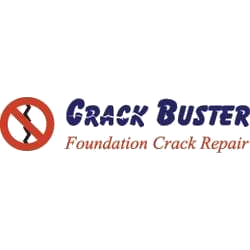CAN CRACK INJECTIONS BE USED ON ALL CRACKS?
It is possible to use crack injections only on poured concrete wall cracks. Concrete block walls have hollow cores which is why these injections do not work in them. Crack injections are highly preferred today for repairing foundation cracks as it is applied from the inside of the wall and there is no necessity for digging on the outside. Whether the crack is wide (up to ½”), or hairline, these injections work wonderfully in filling cracks up.
The entire depth and length of the crack is filled up by the viscous liquid injected into them. Crack injections are extremely effective in eliminating leakage of water on a permanent basis. You can be assured that in future, water will not be able to enter into the building through the crack. The process of injecting the cracks with Polyurethane or epoxies does not require any drilling.
Polyurethane Injection
The best option for concrete repair is polyurethane. When it comes into contact with water, polyurethane expands to fill the crack completely. This stops any leakage of water permanently. Being flexible, polyurethane does not allow water to get into the concrete.
If there is a structural problem and the concrete is dry, then epoxy injection is highly recommended. Before choosing between the injections, you must check for any moisture behind the drywall or panel. This can be done in several ways.
Usually, a building inspector identifies moisture by checking for rusted heaters and steel port base, damp wall base, mildew in carpets, peeling of floor tiles, a white powdery substance or efflorescence on the concrete, decay, discoloration or stains on the wooden panelling, posts, partitions and drywall, moss growth, improper water grading, rain gutter damage, condensation on concrete and windows and a musty smell.
Periodically, check your foundation to find any visible cracks or leaks in the concrete, any holes in the floor slab and foundation wall joint and in the floor expansion control joints. There are methods with which it is possible to check for transmission of moisture through concrete.
The easiest method is to cut a square piece of plastic foil or sheeting and place it on the area to be tested. Use a duct tape to seal the edges and leave it for a couple of days. If you find damp spots or water droplets in the plastic, then you can be sure there is moisture in the concrete. It is then time to start looking for cracks and call in experts to fill them.

There are no comments